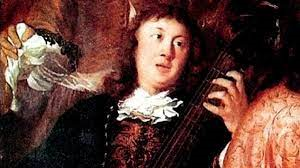Dietrich Buxtehude (1637–1707) was one of the most influential composers of the Baroque period. His works, especially for organ and choir, profoundly shaped the music of his time and influenced composers like Johann Sebastian Bach, who famously walked over 250 miles to hear Buxtehude perform. Buxtehude’s compositions are revered for their complexity, emotional depth, and inventive use of counterpoint. Here are five of his finest works that every Baroque music lover should know:
1. Passacaglia in D Minor, BuxWV 161
The Passacaglia in D Minor is one of Buxtehude’s most celebrated organ works. It features a recurring bass theme that evolves throughout the piece, creating a sense of tension and release. The passacaglia form, which involves a series of variations over a repeating bass line, allows Buxtehude to showcase his mastery of counterpoint and harmony. The work’s somber, almost mystical atmosphere makes it a staple of the organ repertoire and a favorite among performers and audiences alike.
2. Membra Jesu Nostri, BuxWV 75
Membra Jesu Nostri is a cycle of seven cantatas meditating on the body of Christ during the crucifixion. Written for voices and a small instrumental ensemble, it is considered one of Buxtehude’s finest vocal works. The cycle is both deeply spiritual and emotionally charged, with each cantata focusing on a different part of Christ’s body. The text, drawn from medieval poetry, is set to music that alternates between expressive solo passages and rich choral harmonies, creating a moving and introspective experience.
3. Prelude, Fugue, and Chaconne in C Major, BuxWV 137
This piece is a brilliant example of Buxtehude’s skill in writing for the organ. The Prelude, Fugue, and Chaconne in C Major opens with an energetic prelude that showcases the composer’s improvisatory flair. The fugue that follows is a tightly woven masterpiece of contrapuntal writing, while the chaconne brings the work to a majestic conclusion with a series of variations on a stately theme. This piece is a testament to Buxtehude’s ability to blend structure with expressive freedom, making it a favorite among organists.
4. Ciacona in E Minor, BuxWV 160
The Ciacona in E Minor is another of Buxtehude’s great organ works, characterized by its elaborate use of a repeating bass pattern, a hallmark of the chaconne form. This piece stands out for its emotional intensity and the way Buxtehude builds drama through the successive variations. The combination of intricate counterpoint and striking harmonic progressions creates a sense of both grandeur and intimacy, making it one of the composer’s most moving works.
5. Jesu, Meine Freude, BuxWV 60
This sacred cantata, Jesu, Meine Freude, is a testament to Buxtehude’s profound sense of devotion and his mastery of vocal music. Scored for choir, soloists, and instruments, the cantata is filled with expressive arias, intricate choruses, and sensitive instrumental writing. The text, a meditation on the joy of faith in Christ, is matched by Buxtehude’s beautiful melodies and harmonies, making this work a deeply moving musical reflection on spiritual joy and hope.
Conclusion: Buxtehude’s Enduring Legacy
Dietrich Buxtehude’s compositions represent some of the finest examples of Baroque music, particularly for the organ and in sacred settings. His work laid the groundwork for future generations of composers, most notably Johann Sebastian Bach, who admired and studied Buxtehude’s music. These five compositions capture the depth, creativity, and spiritual power that characterize Buxtehude’s legacy, ensuring his place as one of the great composers of the Baroque era.


Comments are closed